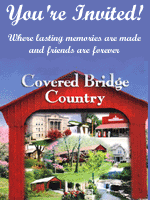|
|
Spring is a great time to catch the excitement of bird watching, with hundreds of migrants returning for summer, and year-round residents nesting. The call of the whip-poor-will in the evenings and the sight of the first hummingbird is a welcome sign that summer is almost here. Over 280 species of birds can be seen throughout Southern Indiana. The following are just a few. At the bottom of the article you will find information on bird counts and other ways you can help the birds of Indiana.
The Great Blue Heron by William Zimmerman The Great Blue Heron: This large bird enjoys wading in shallow, weedy water, feeding on fish and other aquatic animals. It is a fairly common migrant throughout the state, and sometimes winters here as well. They can be found at lakes, ponds, streams, or even flooded fields. Great blue herons need large trees in which to build their stick nests, as they often return to the same nest year after year, adding to the nests, which can become enormous. At the turn of the century some “rookeries” or nesting sites had thousands of nesting birds. Because of the gradual loss of habitat, today the average number of nests in a rookery is around 30.
Wood Ducks by William Zimmerman Wood Duck: The wood duck is one of the darlings of Indiana’s waters. With its colorful plumage and compact size, the wood duck looks like a colorful toy bobbing in the water. Wood ducks have unique nesting habits. For one, they are monogamous, meaning one male mates with one female. The females lay their eggs high off the ground in cavities of trees or man-made boxes. Sometimes a second female will “drop” her eggs in an established nest, and the first duck will hatch them out with her own. The ducklings are born “precocial”, meaning they are mobile, downy, and can find their own food. When they are ready to leave the nest the mother flies down to the ground or water below and calls them. The ducklings jump down landing next to the mother, never to return to the nest again. At the turn of the century wood ducks were nearly extinct. Thanks to the 1918 Migratory Bird Treaty Act, market hunting of migratory waterfowl was outlawed, and today there are about 40,000 breeders in the state. They are abundant at Muscatatuck, even in winter, with Christmas countings of wood ducks as high as 125.
Northern Cardinal by William Zimmerman Northern Cardinal: Even though the cardinal is commonly seen throughout the state, its brilliant red color is always a welcome site, especially in winter when we need a burst of color! The Northern Cardinal is Indiana’s state bird. The male is shown here feeding a female, which is part of their courtship ritual.
Red Bellied Woodpeckers by William Zimmerman
Downy Woodpeckers by William Zimmerman
Pileated Woodpecker by William Zimmerman The pileated woodpecker is the largest woodpecker found in Indiana. In the 1930’s they were nearly extinct, but are fairly common today throughout most of Southern Indiana. Their loud pecking can be heard up to a mile away. The pileated woodpecker creates different shapes of holes in trees, depending on the purpose. Entrances to nesting holes are usually round, while feeding excavations are usually rectangular. One of their favorite trees for food is the sassafras, also common in Southern Indiana.
Eastern Bluebirds by William Zimmerman
White-Breasted Nuthatch by William Zimmerman Warblers: Bird watchers throughout the country enjoy warblers each spring, as these are some of the most highly migratory birds. There are around 36 different species that can be seen in spring and summer in Southern Indiana, each having its own distinctive appearance and song. Most warblers spend the majority of their time in transit, wintering in southern-most U.S. and South America, and returning north just long enough to breed and raise their young.
Yellow-Throated Warbler by William Zimmerman The yellow-throated warbler is sometimes called the sycamore warbler because of its association with this tree. They often nest in sycamore trees, which are usually near streams or water. Look up in the treetops, since the yellow-throated warbler makes its nest around 65 feet off the ground.
Bird Counts: The National Audubon Society and the Cornell Lab of Ornithology sponsor several bird counts throughout the year. This helps track the migrations of birds and gives information on their habits. For information on bird counts see www.birdsource.org. Create a Wildlife Habitat: The National Wildlife Federation helps people learn to create habitats for wildlife, and has given over 25,000 certificates to individuals and groups for their efforts. For information on creating a wildlife habitat in your backyard, schoolyard, workplace or community, see www.nwf.org/habitats. |

|
All Feature Articles, artwork and photographs ©2000 by Southernin.com. Some information on the 'County Info' pages is taken directly from brochures published by Visitors Bureaus and Chambers of Commerce.